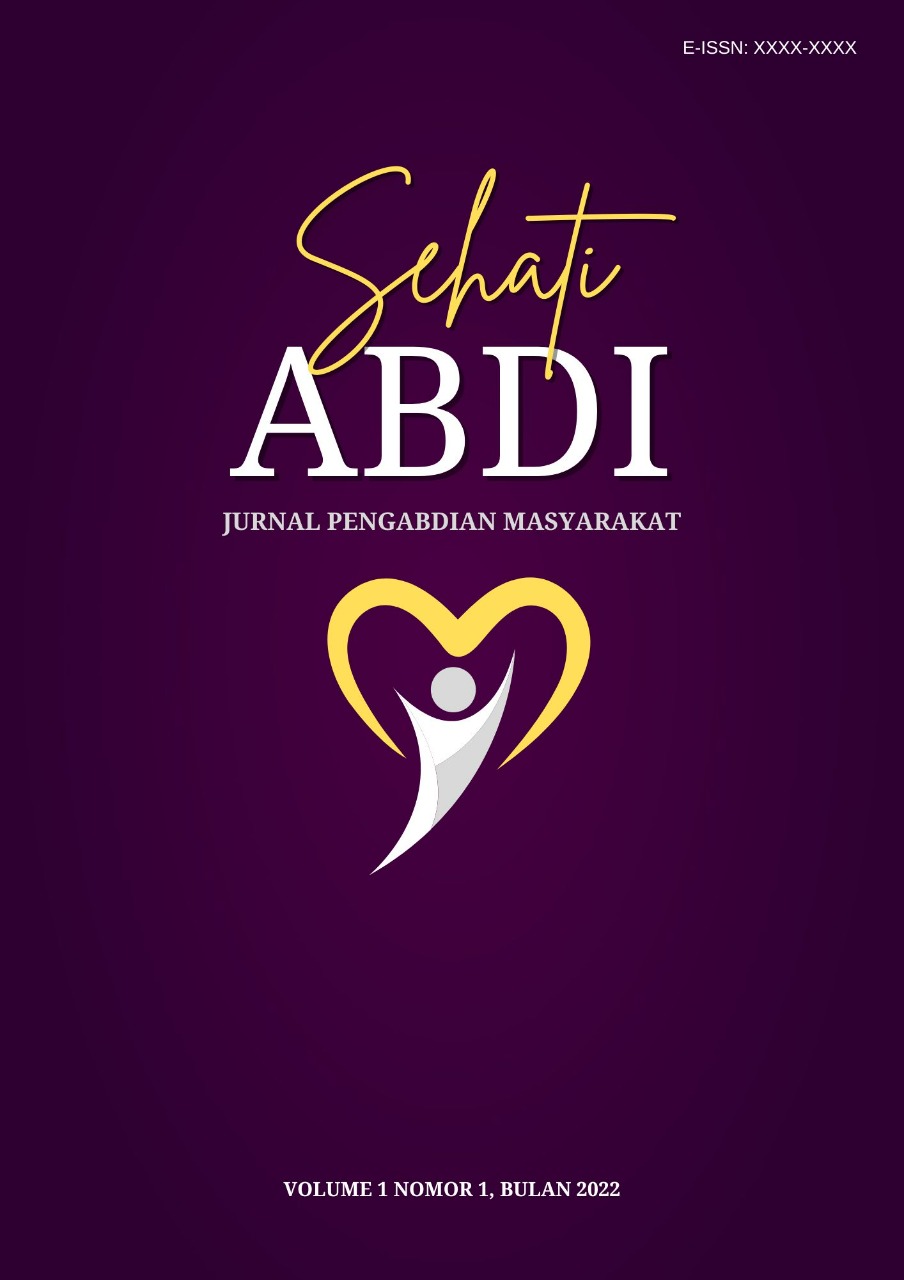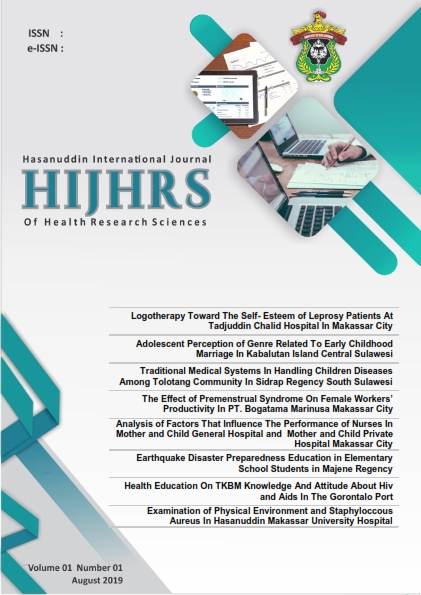THE EFFECTIVENESS OF AUDIO VISUAL MEDIA INTERVENTION AKU BANGGA AKU TAHU (ABAT) ON KNOWLEDGE OF STREET CHILDREN IN PREVENTION OF HIV & AIDS TRANSMISSION IN MAKASSAR CITY
Abstrak
Transmission of HIV & AIDS generally starts from risky behaviors such as free sex. Free sex is closely related to premarital relationships that are often found in groups of teenagers to young adults including street children. This study aims to determine the effectiveness of ABAT audio visual media interventions on the knowledge of street children in the prevention of HIV & AIDS transmission in Makassar City. The study design uses a quasy experimental approach with the Nonequivalent Control Group Design. Sampling using non probability sampling by purposive sampling. The research sample consisted of 48 intervention groups and 47 controls. Bivariate data analysis using SPSS statistical applications, using the non parametric two related sample (Wilcoxon) test and Mann Whitney. The results showed that the average knowledge score before and after the intervention, where the mean value ± SD was 11,25 ± 1,952 to 19,17 ± 1,894 with a p value (p = 0,001) in the intervention group, and at the mean value ± SD in the control group was 12,17 ± 2,729 to 18.02 ± 1,882 with a p value (p = 0,001) which meant that there were significant differences in knowledge before and after the ABAT audio-visual media intervention. The results of the mann whitney test showed that there was a difference in knowledge after the intervention of ABAT audio-visual media playback three times and once with p value (p = 0,003). It can be concluded that ABAT's audio-visual media interventions are three times more effective than just once. Provision of health information can then be emphasized on aspects that are not yet properly understood such as lifestyle choices and the use of condoms for the prevention of STIs and HIV & AIDS.
Referensi
Azmiyati S.R., Cahyati W.H. & Handayani O.W.K. (2014). Gambaran Penggunaan Napza Pada Anak Jalanan Di Kota Semarang. KESMAS - Jurnal Kesehatan Masyarakat, 9(2):137–143.
Azriful A., Ibrahim I.A. & Sulaiman Y. (2016). Gambaran Pengguna Narkoba Inhalasi (Ngelem) Pada Anak Jalanan di Kota Makassar Tahun 2015. Al-Sihah : Public Health Science Journal, 8(1):88–101.
Etrawati F., Martha E. & Damayanti R. (2017). Psychosocial Determinants of Risky Sexual Behavior among Senior High School Students in Merauke District. Kesmas: National Public Health Journal, 11(3):127–132.
Evianasari N. & Anggraini. (2017). Pengaruh Media Kie “Aku Bangga Aku Tahu” Terhadap Pengetahuan Remaja Tentang HIV & AIDS di SMA “P” Bandar Lampung Tahun 2017. Jurnal Kebidanan, 3(3):44–148
Ho D.T.K. & Intai R. (2018). Effectiveness of Audio-Visual Aids in Teaching Lower Secondary Science in A Rural Secondary School. Asia Pacific Journal of Educators and Education, 32:91–106.
Ifroh R.H. & Ayubi D. (2018). Efektivitas Kombinasi Media Audiovisual Aku Bangga Aku Tahu Dan Diskusi Kelompok Dalam Upaya Meningkatkan Pengetahuan Remaja Tentang HIV-AIDS. Perilaku Dan Promosi Kesehatan, 1(1):32–43.
Lapada A.A. & Lapada A.A. (2017). Audio-Visual Aided Instruction in Science Among High School Students in the Philippines. International Journal of Education and Research, 5(7):139–156.
Meidiana R., Simbolon D. & Wahyudi A. (2018). Pengaruh Edukasi melalui Media Audio Visual terhadap Pengetahuan dan Sikap Remaja Overweight. Jurnal Kesehatan, 9(3):478-484.
Notoatmodjo. (2010). Promosi Kesehatan Teori dan Aplikasi Edisi Revisi. Jakarta: Rineka Cipta.
UNAIDS. (2013). GLOBAL REPORT: UNAIDS report on the global AIDS epidemic 2013. Geneva : Joint United Nations Programme on HIV and AIDS.
Yanti E.D., Dewi Y.I. & Nurchayati S. (2015). Pengaruh Pendidikan Kesehatan dengan Menggunakan Media Audiovisual terhadap Pengetahuan dan Sikap Remaja Mengenai Upaya Pencegahan Penyakit Menular Seksual. Jurnal Online Mahasiswa, 2(2):1048–1057.



